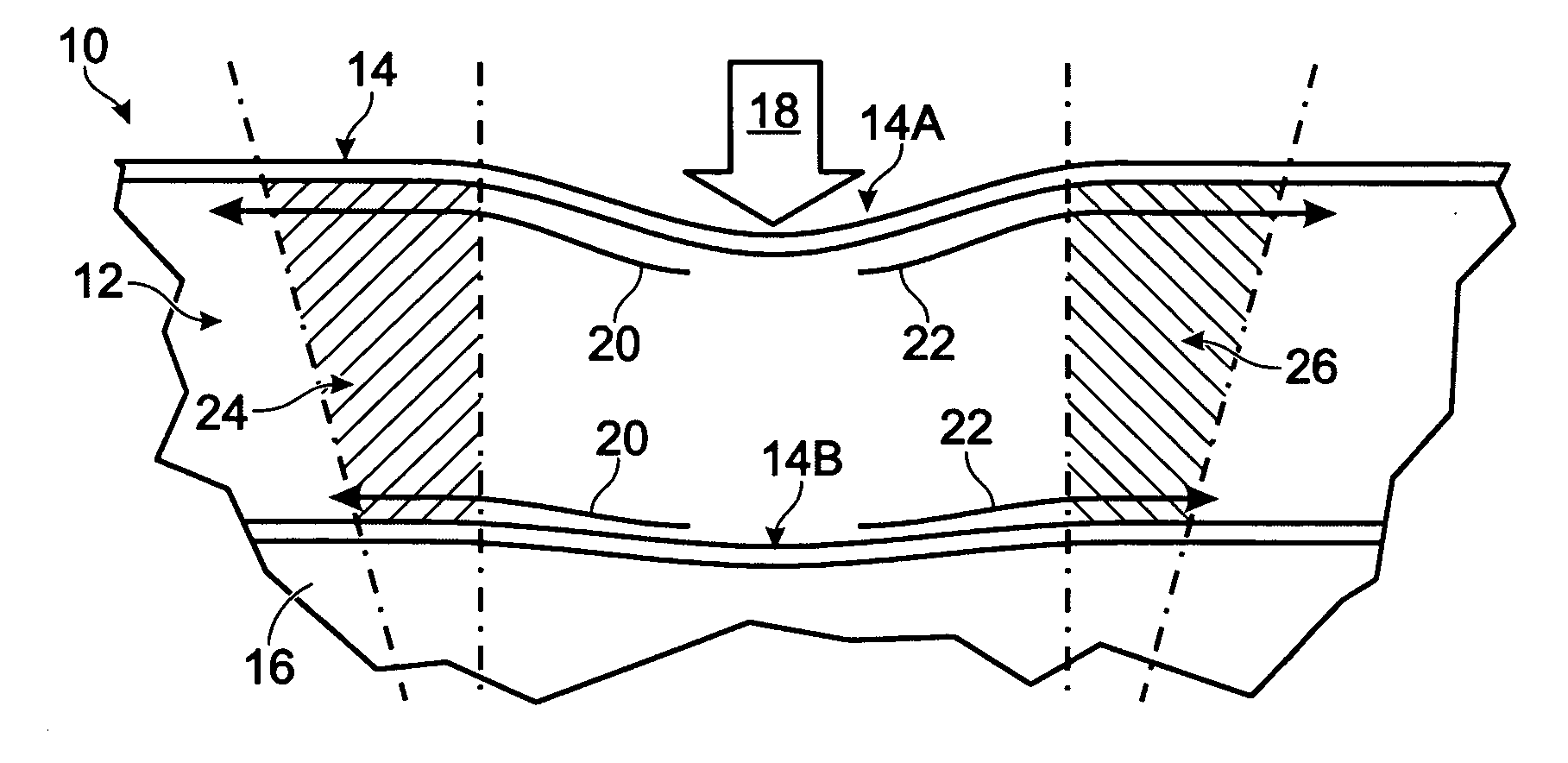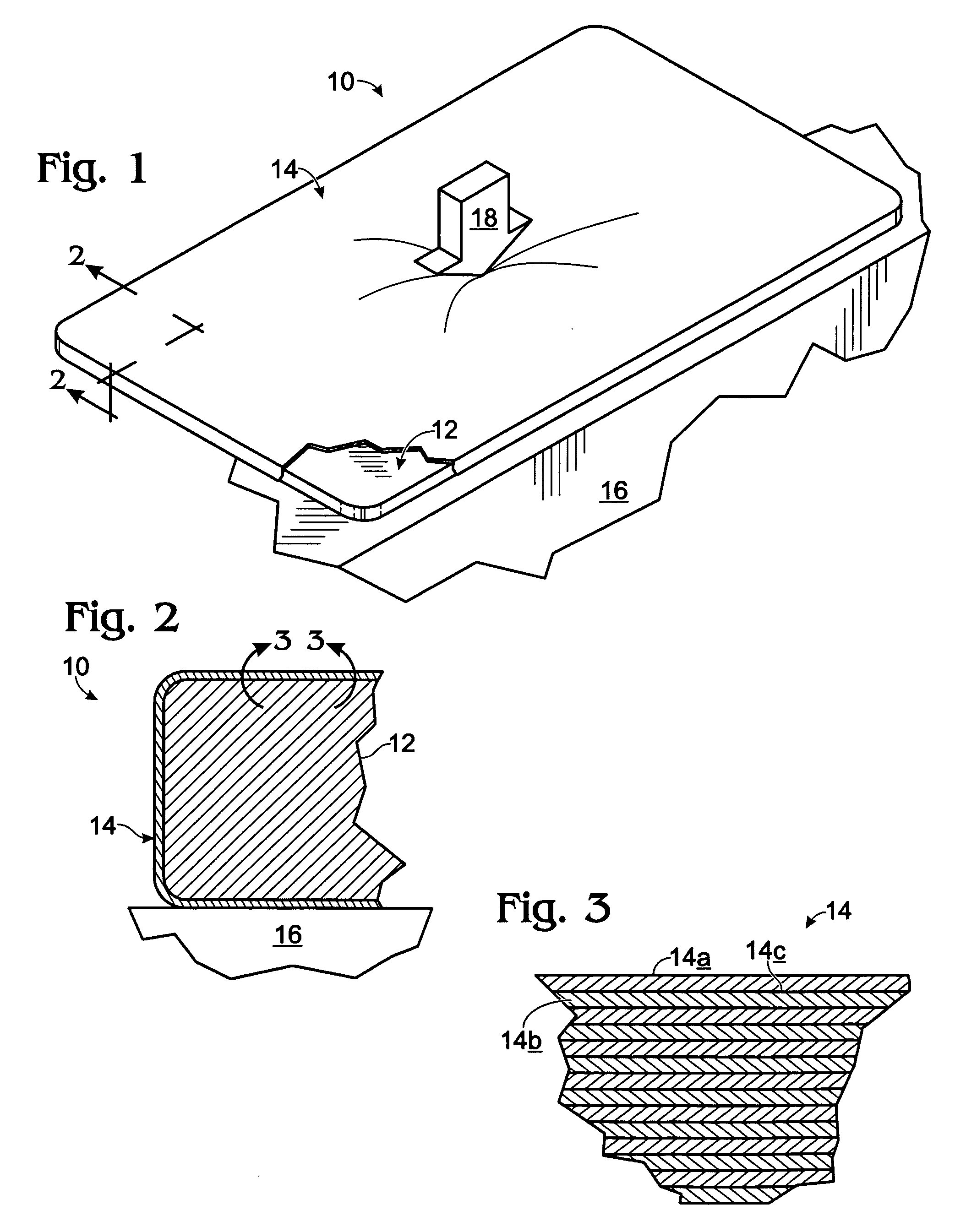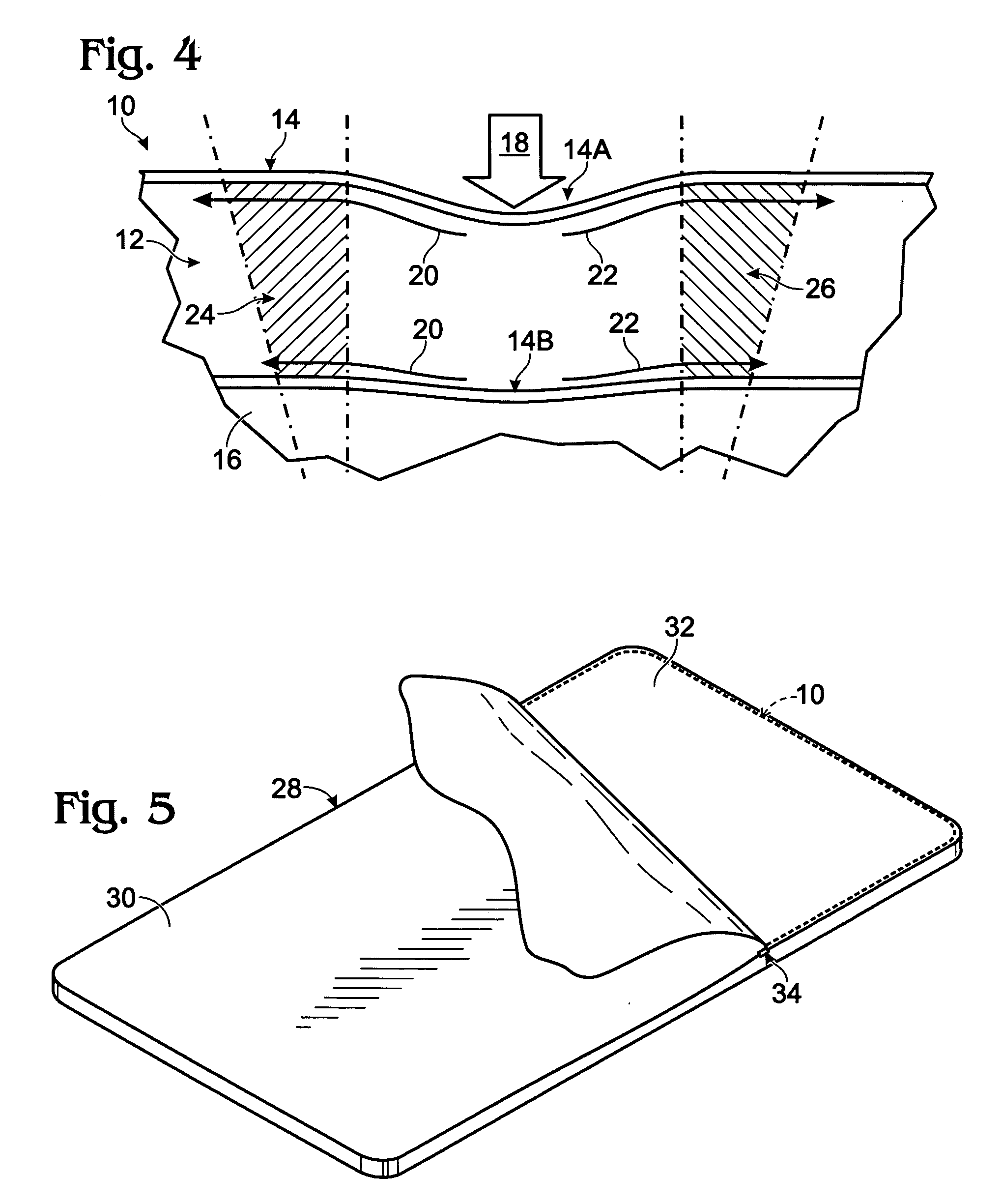Anatomical, pressure-evenizing mattress overlay
anatomical and pressure-evening technology, applied in the field of anatomical and pressure-evening mattress overlay, can solve the problems of real prevention and effective real prevention, and the cost of a mattress has been almost prohibitively high, and none of the results seem particularly successful or satisfactory, and achieve the effect of effective ventilation
- Summary
- Abstract
- Description
- Claims
- Application Information
AI Technical Summary
Benefits of technology
Problems solved by technology
Method used
Image
Examples
Embodiment Construction
[0027]Turning attention now to the drawings, and referring first of all to FIGS. 1-3, inclusive, indicated generally at 10 is a preferred and best-mode embodiment of an anatomical, pressure-evenizing mattress overlay constructed in accordance with the present invention. Overlay 10 herein has an overall thickness of about 1-inches (a preferred maximum thickness), a lateral width of about 36-inches, and a length of about 75-inches. Overlay 10 is formed, basically, from two different components, or portions, including a single-piece, dynamic-response core expanse 12, and an elastomeric, air-breathable, moisture-resistant coating 14 which, as will shortly be explained, is load-transmissively (mechanically), interfacially (face-to-face) bonded to the entirety of the outside broad-planar and edge surface area of expanse 12.
[0028]In FIGS. 1 and 2, overlay 10 is shown resting upon a hospital-bed mattress of conventional construction shown generally and fragmentarily only at 16 in these two ...
PUM
 Login to View More
Login to View More Abstract
Description
Claims
Application Information
 Login to View More
Login to View More - R&D
- Intellectual Property
- Life Sciences
- Materials
- Tech Scout
- Unparalleled Data Quality
- Higher Quality Content
- 60% Fewer Hallucinations
Browse by: Latest US Patents, China's latest patents, Technical Efficacy Thesaurus, Application Domain, Technology Topic, Popular Technical Reports.
© 2025 PatSnap. All rights reserved.Legal|Privacy policy|Modern Slavery Act Transparency Statement|Sitemap|About US| Contact US: help@patsnap.com



